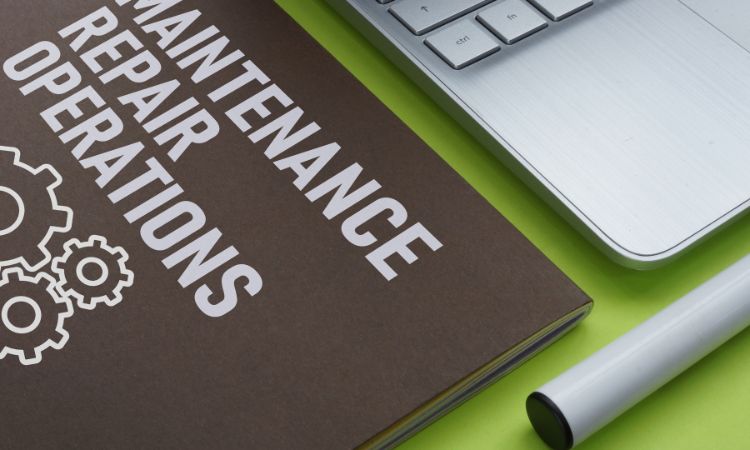The Impact of Digitalization on Italy’s Maintenance Landscape

Digitalization is the process of using digital technologies to create new or modify existing business processes, products, or services. In the context of maintenance operations, digitalization refers to the adoption of smart devices, software, and algorithms that enable data-driven and proactive maintenance strategies.
The significance of digitalization in modern industries cannot be overstated. Digitalization can help businesses improve their operational efficiency, reduce costs, enhance customer satisfaction, and gain a competitive edge. According to a report by Research and Markets, the Italy maintenance, repair, and operation (MRO) market size is projected to grow at a CAGR of 2.80% between 2024 and 2032. The market is being driven by the robust growth of the civil aviation and military aviation sectors.
However, the adoption of digitalization in Italy’s maintenance landscape is not without its challenges and barriers. In this blog post, we will explore the current state of Italy’s maintenance landscape, the digitalization trends in its MRO sector, the benefits of digitalization in maintenance operations, the case studies of successful implementations of digitalization in Italian industries, the challenges and barriers to digitalization adoption, and the strategies for overcoming them. We will also discuss the future outlook of digitalization’s role in shaping Italy’s maintenance future.
Current State of Italy’s Maintenance Landscape
Italy is one of the leading industrialized countries in Europe, with a strong presence in sectors such as manufacturing, automotive, aerospace, energy, and transportation. However, the maintenance landscape in Italy is still largely dominated by traditional approaches, such as reactive and preventive maintenance.
Reactive maintenance is the practice of repairing or replacing equipment only after it fails or breaks down. This approach can result in high maintenance costs, low equipment availability, and poor quality. Preventive maintenance is the practice of performing scheduled maintenance activities based on time intervals or usage cycles. This approach can reduce the risk of breakdowns, but it can also lead to over-maintenance, waste of resources, and inefficiency.
The challenges faced by Italian businesses in terms of maintenance efficiency and effectiveness are exacerbated by the aging of the equipment, the lack of skilled technicians, the complexity of the systems, and the increasing customer expectations. These challenges call for a more innovative and intelligent approach to maintenance, which is where digitalization comes in.
Digitalization Trends in Italy’s MRO Sector
Digitalization is transforming the way businesses perform maintenance operations in Italy, by enabling them to shift from reactive and preventive maintenance to predictive and prescriptive maintenance.
Predictive maintenance is the practice of using data from sensors, software, and algorithms to monitor the condition and performance of equipment, and to predict when it will need maintenance or repair. This approach can help businesses optimize their maintenance schedules, reduce unplanned downtime, and extend equipment life.
Prescriptive maintenance is the practice of using data from sensors, software, and algorithms to not only predict when equipment will need maintenance or repair, but also to prescribe the best course of action to take. This approach can help businesses improve their maintenance decision-making, increase their operational efficiency, and enhance their customer satisfaction.
Some of the digital technologies that are driving the adoption of predictive and prescriptive maintenance in Italy’s MRO sector are:
- IoT (Internet of Things) devices: These are smart devices that can collect, transmit, and process data from equipment, such as temperature, vibration, pressure, and humidity. IoT devices can help businesses monitor the condition and performance of their equipment in real-time, and alert them of any anomalies or faults.
- Predictive maintenance software and algorithms: These are software and algorithms that can analyze the data from IoT devices, and use machine learning, artificial intelligence, and statistical methods to predict when equipment will need maintenance or repair, and what are the root causes of the problems.
- AR (Augmented Reality) technology: This is a technology that can overlay digital information, such as images, videos, text, or audio, onto the physical environment, using devices such as smartphones, tablets, or glasses. AR technology can help technicians perform maintenance procedures more efficiently and effectively, by providing them with visual guidance, instructions, and feedback.
Benefits of Digitalization in Maintenance Operations
Digitalization can bring significant benefits to businesses in terms of maintenance operations, such as:
- Improved equipment uptime and reliability: By using digital technologies to monitor and predict the condition and performance of equipment, businesses can reduce the frequency and severity of breakdowns, and ensure that their equipment is always in optimal working condition.
- Reduction in unplanned downtime and maintenance costs: By using digital technologies to optimize their maintenance schedules and procedures, businesses can avoid unnecessary or excessive maintenance activities, and save on labor, material, and energy costs.
- Enhanced customer satisfaction and loyalty: By using digital technologies to improve their maintenance decision-making and service delivery, businesses can meet or exceed their customer expectations, and increase their customer retention and referrals.
Case Studies: Successful Implementations of Digitalization in Italian Industries
There are many examples of successful implementations of digitalization in Italian industries, such as:
- Manufacturing sector: A leading manufacturer of industrial valves in Italy implemented IoT sensors for predictive maintenance, and achieved a 30% reduction in maintenance costs, a 50% reduction in unplanned downtime, and a 10% increase in equipment availability.
- Transportation sector: A major railway operator in Italy integrated AR technology for maintenance procedures, and achieved a 40% reduction in maintenance time, a 25% reduction in errors, and a 15% increase in technician productivity.
Challenges and Barriers to Digitalization Adoption
Despite the benefits and opportunities of digitalization, there are also some challenges and barriers that hinder its adoption in Italy’s maintenance landscape, such as:
- Lack of awareness and education about digitalization benefits: Many businesses in Italy are still unaware of the potential benefits of digitalization in maintenance operations, or lack the knowledge and skills to implement and use digital technologies effectively.
- Initial investment costs and ROI concerns: Many businesses in Italy are reluctant to invest in digital technologies, due to the high upfront costs, the uncertainty of the return on investment, and the difficulty of measuring the impact of digitalization on their performance.
Strategies for Overcoming Challenges and Driving Digitalization
To overcome the challenges and barriers to digitalization adoption, and to drive the digital transformation of Italy’s maintenance landscape, some of the strategies that can be adopted are:
- Education and training initiatives for employees and management: Businesses in Italy should invest in education and training initiatives for their employees and management, to raise their awareness and understanding of the benefits of digitalization, and to equip them with the necessary skills and competencies to use digital technologies effectively.
- Collaboration with technology providers and solution integrators: Businesses in Italy should collaborate with technology providers and solution integrators, to leverage their expertise and experience in digitalization, and to access the best and most suitable digital solutions for their maintenance needs and goals.
Future Outlook: Digitalization’s Role in Shaping Italy’s Maintenance Future
Digitalization is playing a key role in shaping Italy’s maintenance future, by enabling businesses to achieve higher levels of efficiency, effectiveness, and excellence in their maintenance operations. The future of digitalization in Italy’s MRO sector is expected to be characterized by:
- Further growth and evolution of digital technologies: The digital technologies that are currently used for maintenance operations, such as IoT, predictive maintenance software, and AR, are expected to become more advanced, sophisticated, and accessible, and to offer more features, functionalities, and benefits.
- More innovation and advancement in digital solutions: The digital solutions that are currently available for maintenance operations, such as condition monitoring, predictive analytics, and visual guidance, are expected to be complemented by more innovative and advanced solutions, such as digital twins, blockchain, and 5G.
- More adoption and integration of digitalization across industries: The adoption and integration of digitalization in maintenance operations are expected to increase across different industries and sectors in Italy, such as manufacturing, automotive, aerospace, energy, and transportation, and to create more value and opportunities for businesses and customers.
Digitalization is the future of maintenance, and Italy is well-positioned to embrace and benefit from it. By adopting and implementing digital technologies and solutions, businesses in Italy can transform their maintenance operations, and achieve higher levels of performance, productivity, and profitability.
--------------------------------
Guestbeat.com Notice!
Audience discretion is needed, Read TOS.
Submit Guest Post / Read Latest / Category List
App & Rate-Us / Subscribe Daily Newsletter (FREE)



